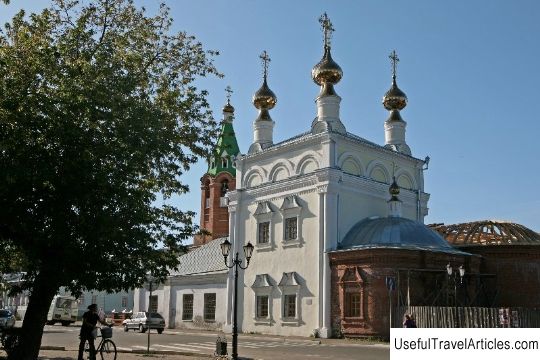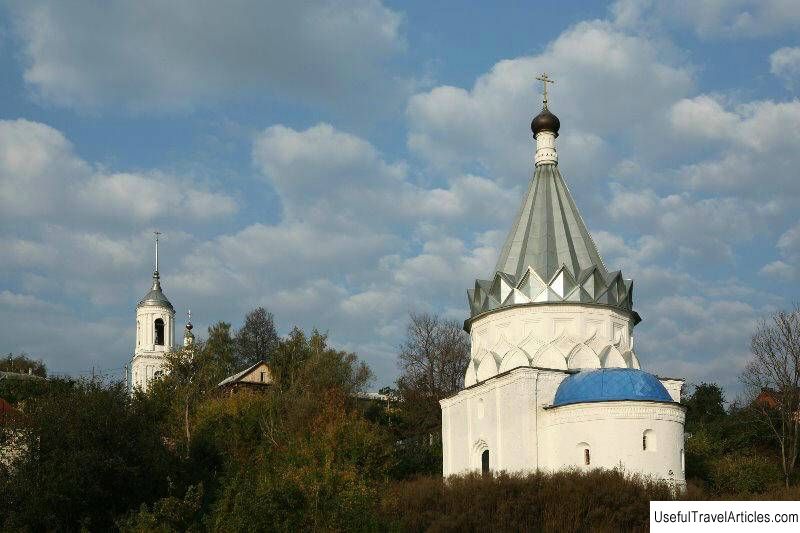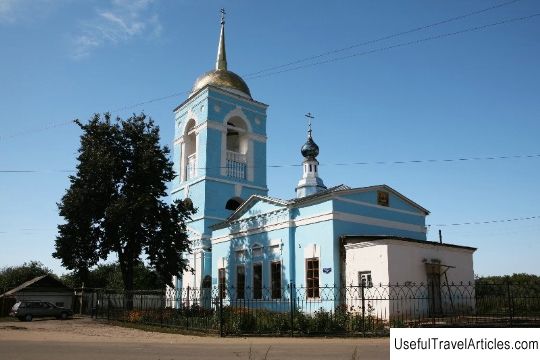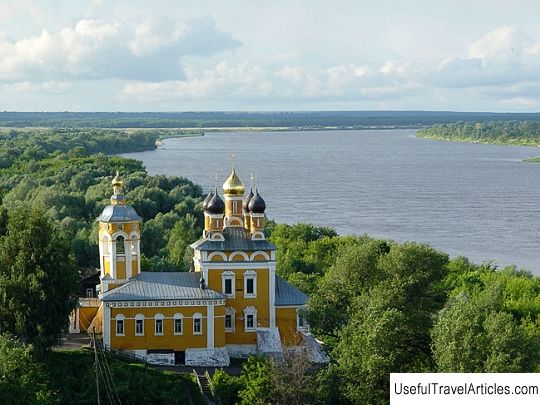Smolensk Church description and photo - Russia - Golden Ring: Murom
Rating: 7,6/10 (3021 votes) 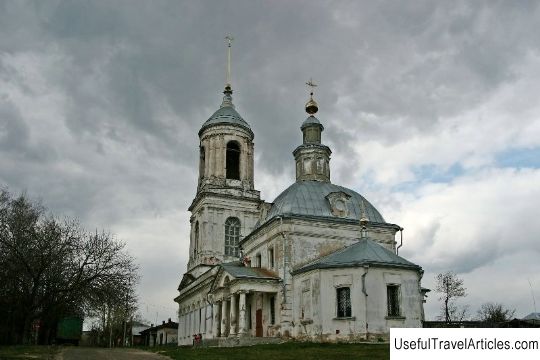
Smolensk church description and photos - Russia - Golden Ring: Murom. Detailed information about the attraction. Description, photos and a map showing the nearest significant objects. Photo and descriptionThe Smolensk church in Murom was erected on the site of an old church destroyed by a fire in 1804. The church is located on the steep bank of the Oka, at the intersection of Gubkin and Mechnikov streets. The favorable location of the church with its high bell tower makes it the architectural dominant of the buildings in this area of Murom. The temple was built with donations from Murom merchants, one of whom was Mikhail Ivanovich Elin. These funds were used to build two chapels. The main side-altar was consecrated in honor of the Smolenskaya icon of the Mother of God, and the second in the name of the Great Martyr Catherine. In 1832, a three-tiered bell tower crowned with a spire was added to the church, in 1838 - a heated winter refectory, where an altar was created in the name of the icon of the Mother of God "Joy of All Who Sorrow". The construction of the bell tower and the refectory was carried out with money allocated by the merchant Karp Timofeevich Kiselev. The modest Smolensk Church, built in the Empire style, despite the double high drum under the small dome, which crowns the dome of the main volume, is somewhat lost against the background of the massive bell tower, made in the classical style. The faceted three-tiered bell tower is magnificently decorated with half-columns with rich pediments and capitals, the window openings of the second tier are framed by beautiful platbands. The belfry is richly decorated with false columns, arched openings. In 1840, a bell weighing 200 poods appeared in the church, which was cast at the expense of merchants Elin, Titov and Kiselev. The main shrine of the temple was the old altar cross of 1676, which contained particles of holy relics. In 1868, after the collapse of the tent in the Kosmodamian church, located nearby, the surviving church utensils and icons were transferred to the Smolensk church. Thanks to this, the church received another name Novo-Kosmodemyanskaya. In 1892, a gatehouse was built on the territory of the church. In the post-revolutionary period, in 1922, all the utensils were removed from the church, and in 1930 the temple was closed. It was remembered again only in the 1970s: the building was restored and transferred to the Murom Museum of Local Lore for organizing exhibitions. In 1995, the Smolensk Church was again on fire - during a summer thunderstorm, lightning struck the spire of the bell tower and the spire collapsed. At the same time, it was decided to transfer the Orthodox Church. The restoration of the church has been underway since 2000. The spire was restored and can be clearly seen on the high bank of the river. The main side-altar of the temple is a quadrangle, which is crowned with a massive octahedral drum and onion dome. A pentahedral apse adjoins the main building on the east side, and elegant porticoes resting on columns from the south and north. The three-nave refectory is covered with sailing vaults and is slightly understated. It is spacious enough and made in the form of a hall. This Murom church, like many Russian churches, is consecrated in the name of the Smolensk Icon of the Mother of God, which is rightfully recognized as one of the main shrines of the Russian land. Having traveled a long way from Jerusalem to Constantinople, the Smolensk icon appeared on Russian soil in 1046, as a dowry received by Prince Vsevolod Yaroslavich for the Byzantine princess Anna, whom he took as his wife. His son Vladimir Monomakh brought the icon to Smolensk, so it got its name "Smolensk". Thanks to the help of the Smolensk icon, Vladimir Monomakh was able to stop the princely feuds and bring Russia to tranquility and peace. According to church tradition, the image of Our Lady of Smolensk saved the city of Smolensk from the invasion of Khan Batu, and before the start of the war with France in 1812, it was transported to Moscow, where Russian soldiers prayed to her for victory. In Soviet times, the icon disappeared in a strange way and it has not yet been found. Copies of the Smolensk icon are common in churches and homes of ordinary believers.             We also recommend reading Monastery Reichersberg (Stift Reichersberg) description and photos - Austria: Upper Austria Topic: Smolensk Church description and photo - Russia - Golden Ring: Murom. |
